Talkin’ like a convict
Students interpret primary sources to discover how First Fleet convicts communicated secretly using flash language as recorded in ‘Australia’s first dictionary’ and compare it to the Aboriginal Sydney language.
Key inquiry question #1
Why did Europeans settle in Australia?
Key inquiry question #2
What was the nature and consequence of contact between Aboriginal and/or Torres Strait Islander peoples and early traders, explorers and settlers?
Learning Intention
Students are learning to:
- use historical sources to find out about the secret language of convicts
- learn about how language has changed over time
- investigate the everyday life and language of convicts
Success criteria
Students will be successful when they can:
- use words from the convict flash language dictionary
- explain how and why flash language was used by convicts
- infer about Aboriginal life from the Aboriginal Sydney language
Student Activities
Flash language
Students discover the man behind the dictionary of convict slang.
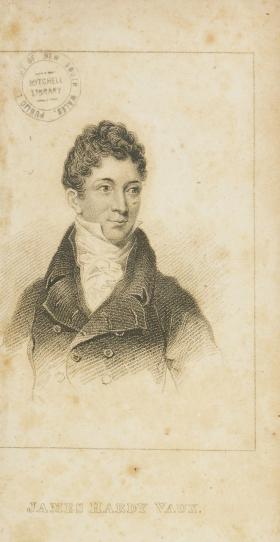
Speaking like a convict
Students delve into flash language to make their own dictionary.
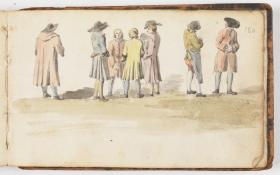
What is he saying?
Students practice using the convict’s flash language in context.
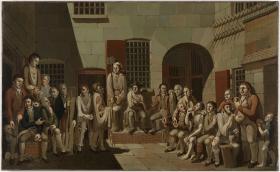
A secret message
Students encounter flash language’s power for convicts and frustration for government officials.
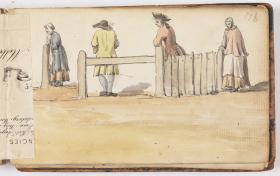
What else can we learn from language?
Students examine what is omitted from the dictionary and compare it to the Aboriginal Sydney language.
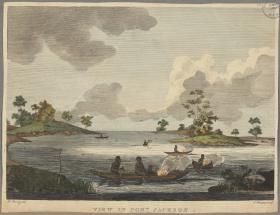
The flash language dictionary
Students consider if there is such a thing as dangerous language.
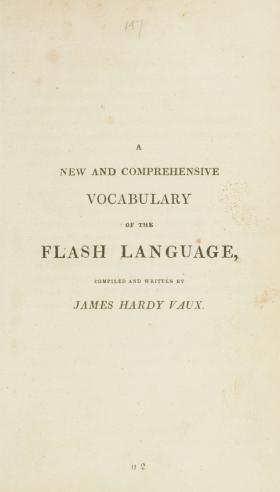
NSW Syllabus for the Australian Curriculum History K-10
A student:
- HT2-3 describes people, events and actions related to world exploration and its effects
- HT2-4 describes and explains effects of British colonisation in Australia
- HT2-5 applies skills of historical inquiry and communication
Stories of the First Fleet, including reasons for the journey, who travelled to Australia, and their experiences following arrival (ACHHK079)
Students:
- describe the establishment of the British colony at Port Jackson
- using a range of sources, investigate the everyday life of ONE of the following who sailed on the First Fleet and lived in the early colony: a soldier, convict, ex-convict, official
The nature of contact between Aboriginal people and/or Torres Strait Islanders and others, for example, the Macassans and the Europeans, and the effects of these interactions on, for example, families and the environment (ACHHK080)
Students:
- describe the nature of contact between Aboriginal people and/or Torres Strait Islander peoples and others, including Aboriginal resistance
- use sources to identify different perspectives on the arrival of the British to Australia
- outline the impact of early British colonisation on Aboriginal and Torres Strait Islander peoples' country.
Comprehension: chronology, terms and concepts:
- respond, read and write, to show understanding of historical matters
- sequence familiar people and events
- use historical terms
Analysis and use of sources:
- locate relevant information from sources provided
Perspectives and interpretations:
- identify different points of view within an historical context
Empathetic understanding:
- explain how and why people in the past may have lived and behaved differently from today
Research:
- pose a range of questions about the past
- plan an historical inquiry
Explanation and communication:
- develop texts, particularly narratives
- use a range of communication forms (oral, graphic, written) and digital technologies
Continuity and change: changes and continuities due to British colonisation of Australia.
Cause and effect: reasons for a particular historical development
Perspectives: different points of view within an historical context
Empathetic understanding: how and why people in the past may have lived and behaved differently from today.
Significance: the importance and meaning of national commemorations and celebrations, and the importance of a person or event.
Contestability: historical events or issues may be interpreted differently by historians, eg British 'invasion' or 'settlement' of Australia.
Cross-curriculum priorities:
- Aboriginal and Torres Strait Islander histories and cultures
General capabilities:
- Critical and creative thinking
- Ethical understanding
- Intercultural understanding
- Literacy
Stories of the First Fleet, including reasons for the journey, who travelled to Australia, and their experiences following arrival (ACHASSK085)
- investigating attitudes to the poor, the treatment of prisoners at that time, and the social standing of those who travelled to Australia on the First Fleet, including families, children and convict guards
- investigating daily life in the Botany Bay penal settlement and challenges experienced by the people there and how they were managed.
The nature of contact between Aboriginal and Torres Strait Islander Peoples and others, for example, the Macassans and the Europeans, and the effects of these interactions on, for example, people and environments (ACHASSK086)
- exploring the impact that British colonisation had on the lives of Aboriginal and Torres Strait Islander Peoples (dispossession; dislocation; and the loss of lives through conflict, disease, loss of food sources and medicines)
- considering whether the interactions between Europeans and Aboriginal and Torres Strait Islander Peoples had positive or negative effects
- examining paintings and accounts (by observers such as Watkin Tench and David Collins) to determine the impact of early British colonisation on Aboriginal Peoples' Country
Additional Information
The following information supports the above activities. Read the activities first.
James Hardy Vaux
Firstly, James Hardy Vaux was NOT a First Fleet convict. He is interesting to us as a recorder of language history that reflects the lives of the convicts on the First Fleet. It is possible that James Hardy Vaux is the only convict to ever have been transported THREE times! His crimes include theft of a handkerchief, stealing jewelry and passing forged bank notes. Despite being a serial criminal, he was brought up in a respectable family and was well educated. In 1819, his dictionary of flash language was published for the first time. The dictionary included 700 words and phrases used by convicts.
You will find Volume 1 of his autobiography, here.
You will find Volume 2 of his autobiography, with the flash language dictionary at the end of the book, here.
Further information on flash language
People who used flash language were known as ‘flash men.’ The language was so difficult to understand in court that often an interpreter was appointed to a trial to translate statements that were made using flash language. When James Hardy Vaux’s dictionary was published, lawyers were particularly keen to purchase a copy for use in their work. The idea of a flash language used by convicts in the colony shows us one common method of challenging authority used by convicts after transportation to New South Wales. Some officials, including Watkin Tench, were infuriated by this form of communication that was so difficult to understand and they wanted to ban its use completely.
Source list for image details in student activity
Image 1: James Hardy Vaux, Memoirs of James Hardy Vaux, [Volume 2], 1819
Images 2 &3: James Hardy Vaux, Memoirs of James Hardy Vaux, [Volume 1], 1819
Image 1: James Hardy Vaux, Memoirs of James Hardy Vaux, [Volume 2], 1819
Image 1: Classified Advertising (1821, December 8). Hobart Town Gazette and Van Diemen's Land Advertiser (Tas. : 1821 - 1825), p. 1, Retrieved March 31, 2022, from http://nla.gov.au/nla.news-article1089599